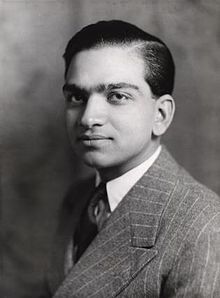| Man Singh II | |
|---|---|
 Man Singh II at an early age | |
| Maharaja of Jaipur | |
| Reign | 7 September 1922–1948 |
| Coronation | 18 September 1922 |
| Predecessor | Sawai Madho Singh II |
| Successor | Sawai Bhawani Singh |
| Titular Reign | 1948–1970 |
| Born | Mor Mukut Singh 21 August 1912 Thikana of Isarda, Rajputana Agency, British India |
| Died | 24 June 1970 (aged 57) Cirencester, England, United Kingdom |
| Consort(s) | Princess Marudhar Kanwar of Marwar Princess Kishore Kanwar of Marwar Princess Gayatri Devi of Cooch Behar |
| Issue | Prem Kumari Singh Sawai Bhawani Singh Sawai Jai Singh III Sawai Prithviraj Singh Sawai Jagat Singh |
| House | Kachwaha |
| Father | Sawai Singh (biological) Sir Sawai Madho Singh II (adoptive) |
| Mother | Sugun Kunwar Singh (biological) |
| Religion | Hinduism |
| Rajpramukh of Rajasthan | |
| In office 30 March 1949 – 31 October 1956 | |
| Preceded by | Bhupal Singh |
| Succeeded by | position abolished Gurmukh Nihal Singh (as Governor of Rajasthan) |
| Ambassador of India to Spain | |
| In office 1965 – 1970[1] | |
Major General Maharaja Sawai Governor Sir Man Singh II GCSI GCIE (born Sawai Mor Mukut Singh; 21 August 1912 – 24 June 1970) was an Indian prince, government official, diplomat and sportsman.
Man Singh II was the ruling Maharaja of the princely state of Jaipur in the British Raj from 1922 to 1947. In 1948, after the state was absorbed into independent India, he was granted a privy purse, certain privileges, and the continued use of the title Maharaja of Jaipur by the Government of India,[2] which he retained until his death in 1970. He also held the office of Rajpramukh (Governor) of Rajasthan between 1949 and 1956. In later life, he served as Ambassador of India to Spain. He was a notable polo player.[citation needed]
- ^ Taknet, D. K. (7 July 2016). Jaipur: Gem of India. IntegralDMS. ISBN 9781942322054.
- ^ Ramusack, Barbara N. (2004). The Indian princes and their states. Cambridge University Press. p. 273. ISBN 978-0-521-26727-4.
The crucial document was the Instrument of Accession by which rulers ceded to the legislatures of India or Pakistan control over defence, external affairs, and communications. In return for these concessions, the princes were to be guaranteed a privy purse in perpetuity and certain financial and symbolic privileges such as exemption from customs duties, the use of their titles, the right to fly their state flags on their cars, and to have police protection. ... By December 1947 Patel began to pressure the princes into signing Merger Agreements that integrated their states into adjacent British Indian provinces, soon to be called states or new units of erstwhile princely states, most notably Rajasthan, Patiala and East Punjab States Union, and Matsya Union (Alwar, Bharatpur, Dholpur and Karaulli).